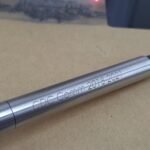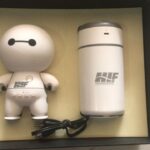Personalized Printing Services

CTAL Resources with its vast experience able to provide printing of Names, Logo and Graphic/Photo on personalized gifts whereby your promotional gifts and corporate gifts are the best branding tool to create public awareness of your product and generate sales for your esteem organization.
We provide complete range of premium gift solution including special customization according to your product branding to complete your gifts with printing or embroidery. Some common techniques of printing gifts are silkscreen printing, pad printing, laser engraving, UV printing and heat transfer printing. Whereby, the techniques of embroidery process including laser engraving, embossing, de-bossing, embroidery stitching and aluminum foil stamping.
From project planning to order fulfillment, our helpful staff is ready to offer you assistance. OEM and ODM orders are welcome.
Personalize Gift Services including but not limited to: T-Shirts, Mug, Lanyard, Pen, Cell Phone Cover, Laptop Covers, and Printing of Logo on Promotional Products & etc. Contact us to find out more about our services and how we could meet your customization needs today.
Contact Us to Inquire About Our Personalized Services: –
Most of our gift products supplied will come with a recommended personalize method and our dedicated sales team of CTAL Resources is always here to assist you if you have any questions. We have broken down the major personalize techniques below by the type of printing/finishing and sample of each technique, click on each tab to learn more information on our custom capabilities for each printing/finishing type. Contact the custom logo experts at CTAL Resources if you have any inquiry!

Heat Transfer printing, also known as thermal printing/dye-sublimation, is a newer decoration method that uses the pigment ink (dye) digitally printed onto a piece of transfer paper and then heated to transfer the dye onto your material using heat and pressure (on a molecular level). Because the design is bonded on a molecular level it will never crack or peel.
Heat transfers able to apply a multi-color custom logos and designs to a variety of custom apparel and accessories. Heat Transfer printing is preferred over direct thermal printing on surfaces that are heat-sensitive or when higher durability of printed matter (especially against heat) is desired. Heat transfer is a popular print process particularly used for the printing of identification labels, ceramic, glass, metal, fabric, lanyard & etc.
Heat transfer can be done in a wide variety of finishes (metallic or glossy finish), but it achieves a shiny finish better than most decoration types by applying a pre-cut vinyl coating design artwork onto any object. This transfer process uses heat to activate and attach a vinyl sticker to a fabric. Vinyl is soft to the touch with great stretch and is durable enough which made in single colors and also has special options such as patterned, glitter, flocked, holographic, glow-in-the-dark, reflective and 3D puff.
Example of finishing done by Heat Transfer processes:

Laser engraving, which is a subset of laser marking or laser itching, is the practice of using lasers to engrave an object and is a broader category of methods to leave marks on an object, which also includes color change due to chemical/ molecular alteration, charring, foaming, melting, ablation, and more. The technique does not involve the use of inks, nor does it involve tool bits which contact the engraving surface and wear out, giving it an advantage over alternative engraving or marking technologies where inks or bit heads have to be replaced regularly.
Laser Engraving is a unique application where the laser removes a thin layer of fiber or pigment dye. By adjusting the intensity and speed of the laser we can sculpt dimension into the design. The impact of laser marking has been more pronounced for specially designed “laser-able” materials and also for some paints. These include laser-sensitive polymers and novel metal alloys.
Example of finishing done by Laser Engraving processes:

Silk-screen printing (also known as Screen Printing) is one of the popular printing techniques which printing designs onto products such as printing images and designs on T-shirts, tote bags, paper, wood, ceramics and other materials.
In order to print using the silk-screen printing technique, different materials are used. To start with, the printing frame is created (the design is printed onto a screen sheet/stencils) so that the ink can be transferred. The frame is placed on the gift item and with the help of a scraper the colors are screened (one layer for each color, up to a maximum of four colors). Whenever applying a layer with the frame ink, it is left to dry and then can be used for another color application for the same image or design artwork.
In spite of technology enhancement, silk-screen printing has become more modern, and there is now ink and automated machinery available that enables to obtain results of superfine printing quality.
Example of finishing done by Silk Screening processes:

The logo on your screen first needs to be “digitized”; mapped out for an embroidery machine based on the intricacies of a logo & its colors. From there, the appropriate thread colors are chosen, a sample stitch out is run, and once approved, your order is put on embroidery machines that read the final digitized file and embroider your logo to its exact specifications.
Embroidered logos typically look best on polos, jackets, woven shirts, caps, and bags, but this is a truly versatile style of decoration and the intricate design evokes a high perceived value and sense of professionalism with added texture to the design.
Example of finishing done by Embroidery processes:

Embossing are the processes of creating raised relief images and designs pattern is raised against the background, whereas Debossing are the processes of creating recessed relief images and designs pattern is sunken into the surface of the material gives your logo a 3D element.
For Embossing or Debossing, dies are constructed from metal in the shape of your logo. Heat and pressure push into or push up from the product and form the material into the impression you want. This decoration method produces stunning & sophisticated results and is perfect for leather or paper decorating and is often used in combination with foil stamping for better finishing.
Example of finishing done by Embossing / Debossing processes:
Hot stamping or foil stamping is a printing method of relief printing in which a metallic or pigmented foil is heated with a magnesium dye and then stamped with enough pressure to seal a thin layer of foil to the surface. Metallic foils are typically gold or silver and pigmented foils are most commonly red or black.
The commonly used tools in hot stamping are dies, hot stamp machine and foil. Dies may be made of metal or silicone rubber, and they may be shaped directly or cast. They can carry high levels of detail to be transferred to the surface and may be shaped to accommodate irregularities in the surface.
Example of finishing done by Foil Stamping processes:
Pad printing (also called tampography or tampo printing) is a printing process that can transfer a 2-D image onto a 3-D object which ink is transferred from a silicone pad onto your desired surface. This is accomplished using an indirect offset (gravure) printing process that involves an image being transferred from a more advanced version of stamping – a pad with ink is pressed onto the product and then left to air dry.
Pad printing is used for printing on otherwise difficult to print on products in many industries, the unique properties of the silicone pad enable it to pick the image up from a flat plane and transfer it to a variety of surfaces, such as flat, cylindrical, spherical, compound angles, textures, concave, or convex surfaces
Example of finishing done by Pad Printing processes:
UV printing is a method of direct printing using a special UV printer, as a similar process to printing a document from your computer. An image is created with no restraints to the number of colors or type of artwork used, and the image is printed or affixed directly onto the material surface. With embroidery & screen printing, you are dealing with physical resources (thread & ink) to create a logo; with UV printing, full color, high definition logos can be done economically, even in small quantities but strictly for rigid substrates such as plastic, wood or aluminium (hard goods like water bottles, notebooks, and electronics) where flexibility is not a concern, it is because the cured UV ink has a significant volume and so gives a slight relief on the surface which somewhat susceptible to cracking if applied to a flexible substrate
UV inks consist mainly of acrylic monomers with an initiator package. After printing, the ink is cured by exposure to strong UV-light. Ink is exposed to UV radiation where a chemical reaction takes place and the photo-initiators cause the ink components to cross-link into a solid surface of an object.
Example of finishing done by UV Printing processes:






